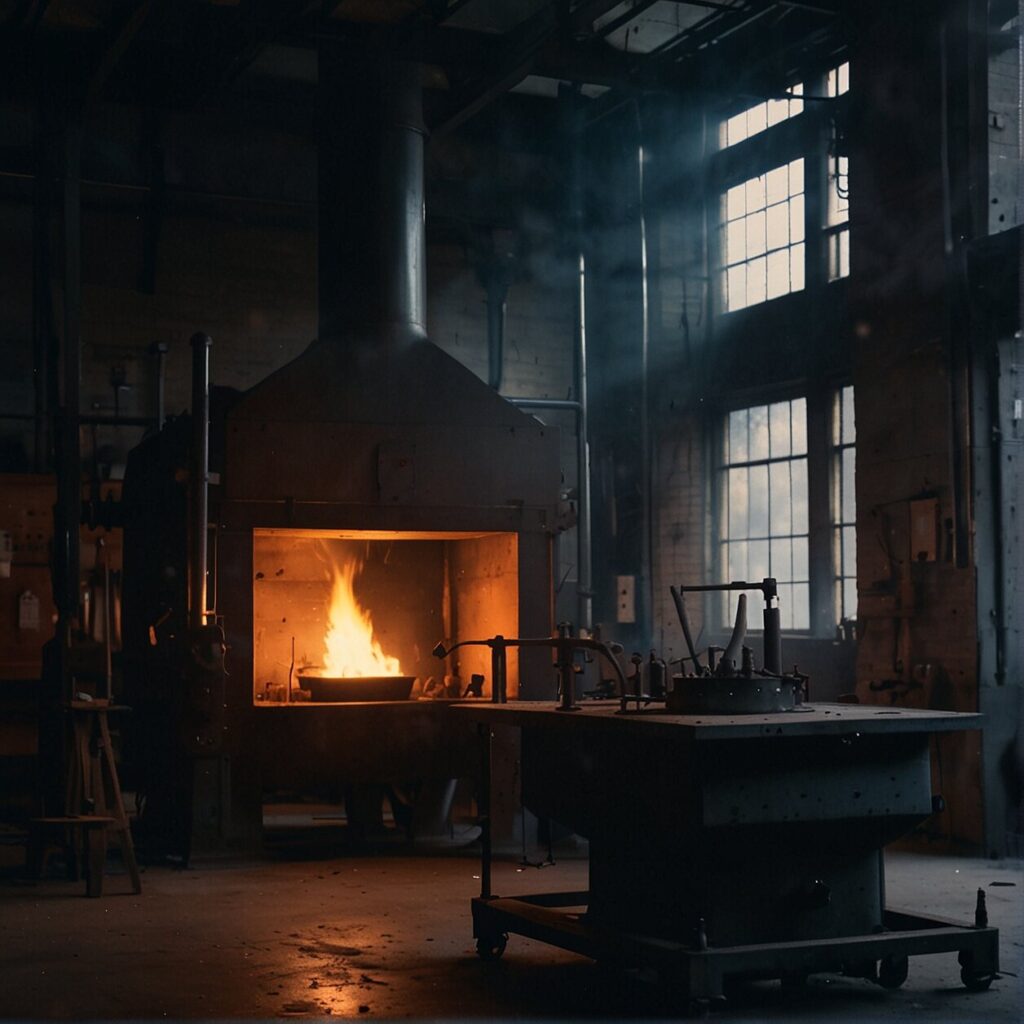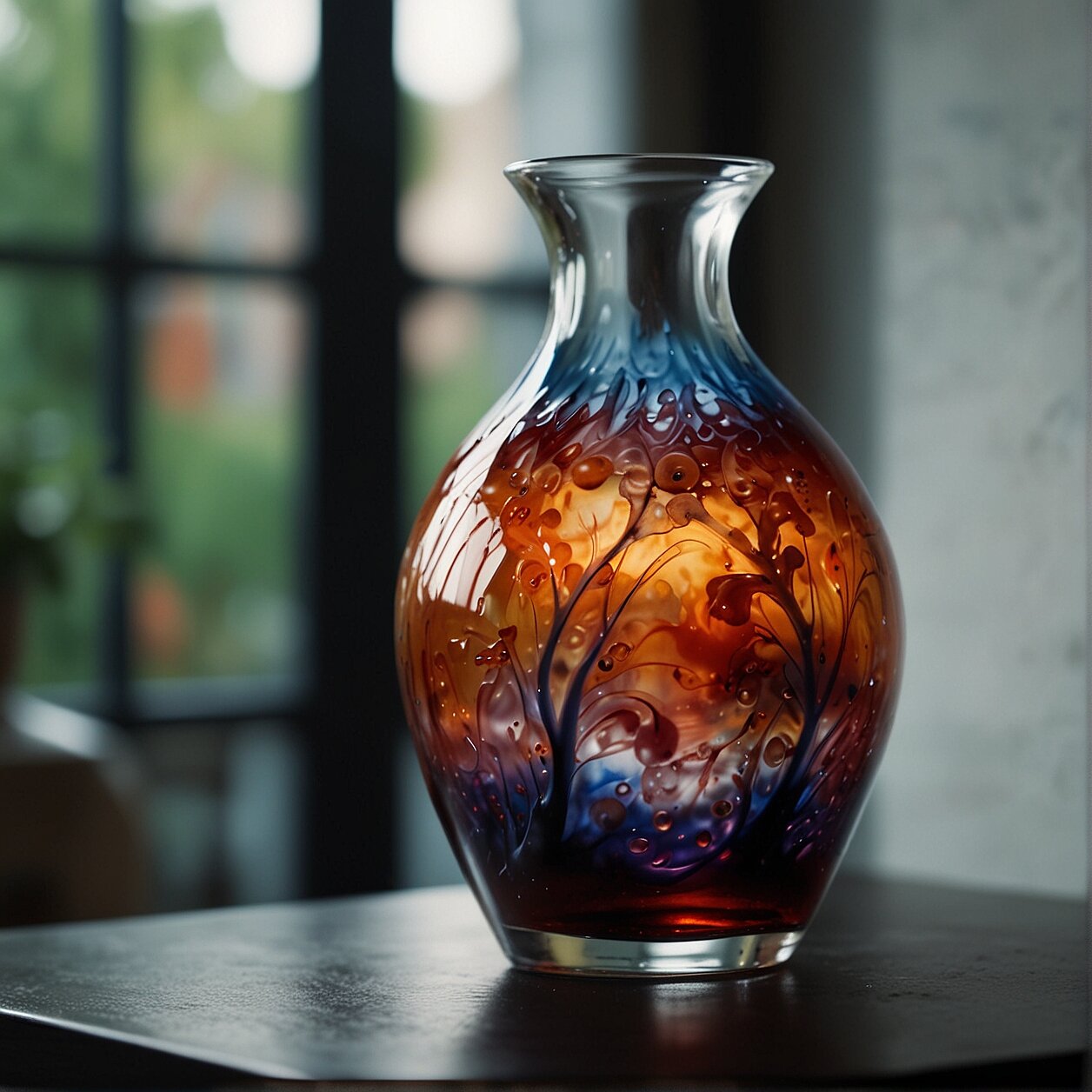Murano Glass: A Shimmering Adventure in Venice, Italy
Picture this: the embers of a roaring furnace glow brightly, casting long shadows across a small Italian workshop. With a flourish as old as the Renaissance itself, a local craftsman unravels a wisp of molten glass to create an exquisite, one-of-a-kind artefact. This isn’t any ordinary glass we’re talking about– this is the legendary Murano glass. Unraveling the mysteries of this delicate craft is like stepping through a time portal, whisking us back to an era when artisans transformed humble raw materials into breathtaking masterpieces.
Murano glass captures the heart of Venice, encapsulating centuries of innovation, artistry, and vibrant culture within its vibrant hues and intricate designs. Whether it’s the swirling patterns that seem to shimmer in the flickering candlelight or the rainbow of colors playing with the sun’s rays, each piece tells a distinctive story. This journey through the world of Murano glassblowing isn’t just about appreciating the craft – it’s about immersing ourselves in the rich tapestry of its history and understanding the passionate people behind it.
Seeing a Murano glass piece is like gazing into the soul of Venice itself – a mesmerizing dance of light, color and legacy that leaves an everlasting impression.
So, are you ready to embark on a journey into the enchanting world of Murano glass blowing? Let’s explore the age-old technique, witness the fiery heart of its creation, decipher its spectrum of colors and textures, and even discover where to find genuine Murano gems in Venice. Grab your passport, step aboard our gondola, and prepare yourself for a vibrant and enlightening adventure.
Murano’s Translucent Legacy: A Journey Through Time
The captivating journey of Murano glass dates back to the latter half of the 13th century on the Venetian island of Murano, Italy. Here, centuries of fine-tuning, experimentation, and innovation have fused to form an art form like no other. The most skilled glass artists in the world have graced Murano’s workshops, engraving this small island’s name into the annals of history and art.
Consider the creation of the LATTIMO technique, which came to life in the 15th century. This technique revealed the magic of opaque white Murano glass, delicately embellished with enamels of various colors. These radiant works of art not only signified a technical triumph but also served as a canvas for the visual storytelling of the era.
In this same period, Venetian artisans invented Aventurine glass, a unique translucent medium with sparkling inclusions of gold, copper, or chromic oxide. This innovation paved the way for countless pieces of magnificent artistry – not just beautiful to look at, but also symbolizing the sheer genius and dedication of Murano glassblowers behind every glittering reflection.
As you delve into the legacy of Murano, you’ll hear tales of masters and apprentices, innovation and tradition, creative triumphs and failures that ultimately forged the legacy we admire today. From sling to blowpipe, from furnace to showroom – every aspect of this journey speaks volumes about the art form’s endurance and the passion of those who dedicate their lives to it.
So, next time you gaze upon a piece of Murano glass, remember, you’re not just seeing a beautiful object. You’re beholding a legacy, a centuries-spanning story told in glass, and a testament to the creative spirit of Murano’s iconic artisans.

Mastering the Art: Techniques of Murano Glass Blowing
In the hands of a skilled artisan, glass transforms from a humble solid to a vibrant creation, filled with life and character. The Murano glass-blowing process is a challenging yet rewarding craft that employs a variety of intricate techniques mastered over centuries. Two of these remarkable, mind-blowing techniques are the Murrine and Avventurina practices.
The Murrine process is regarded as one of the most complex Murano glass techniques. It begins with the construction of a central glass rod, dipped meticulously in layers of colored molten glass. Once cooled, the rod is sliced into cross-section ‘coins’ revealing an intricate pattern as unique as fingerprints. The technique requires precise timing, vast experience, and unwavering concentration. It’s a time-consuming method, but the resulting art pieces are painstakingly vibrant and infinitely varied.
Another technique that adds sparkle to the Murano glass art is Avventurina. This was discovered unintentionally in the 17th century by Murano artists when copper shavings were accidentally mixed with molten glass. This fusion results in a gleaming, shimmering effect as if thousands of stars embedded into the glass, creating a metallic glitter imbued in the glassworks.
These techniques, cultivated and perfected over centuries, are safeguarded and passed down from generation to generation like a precious heirloom. From dainty Murano glass necklaces to majestic Murano glass sculptures, these methods birth masterpieces of inimitable beauty and intricate detail.
The mastery and understanding of these techniques not only remain a testament to the centuries-old tradition but also a cornerstone for emerging Murano glass artisans. Committing years to the craft, these artists continue to enrich the world of art with their pioneering spirit and unwavering dedication to the world-renowned Venetian glassware.
Murano’s Fiery Furnace: The Heart of Glass Creation
Step into the heart of the breathtaking island of Murano and feel the warm embrace of its fiery furnaces. These are the crucibles where magic is made, the birthplace of some of the world’s most exquisite glasswork.
The fiery furnace, also known as the ‘calchera,’ is a symbolic cornerstone of Murano’s tradition of glassblowing. It is in these high-temperature ovens that the raw materials transform, metamorphosing into liquid glass under the skillful hands of deeply dedicated artisans.
Each furnace is not only a tool but a testament to centuries of tradition. Harkening back to the 13th century, these furnaces have heralded many victories over the formidable glass medium. Their bright flames roar with a legacy that whispers ancient secrets to the searing heart of Murano.
Working tirelessly, these relentless glass-makers coax out the liquid beauty from the raw mixture of silica, soda, lime, and potash. The spectacle of this transformation, from inception to extraction, is both mesmerizing and humbling.
Surrounded by these fiery furnaces, the artisans operate with calculated precision and synchronized choreography. Every scoop of the gather, every breath into the blowpipe, every swing of the punty; Each movement is part of a mesmerizing dance performed around the searing heart of the fiery furnace. Their tools, an extension of their being, allow them to shape, swirl, and sculpt the molten glass into tangible dreams.
But let’s not be mistaken, this dance is intense. The furnace’s heat pierces the workshop, demanding both respect and fortitude from those who brave its domain. Even so, the artisans labor on, reverently crafting glass into beautiful pieces of art under the unforgiving heat.
No journey into the world of Murano glass would be complete without acknowledging these fiery cores of creation. It is in these glowing hearts that raw materials become masterpieces, and the skill of generations is fired into every Murano glass piece. To truly understand Murano glass, one must appreciate the fiery furnace as its lifeblood, beating brightly against the canvas of this unique, centuries-old art form.
Murano Glass: The Spectrum of Colors and Textures
When you stand before a Murano glass piece, it’s hard not to be enamored by the symphony of radiant hues and intricate textures. This sophisticated harmony is the product of centuries-old techniques and artistic vision unique to the artisans of Murano.
Veil-thin layers of colorful glass, when expertly manipulated, can resemble everything from the celestial galaxies to underwater worlds. Each Murano glass creation reflects not just the artisan’s skill, but the rich story of the Murano tradition itself.
Techniques like the Murrine, harking back to Roman times and rekindled in the 1880s, underline this diversity of colors and textures. This method blends glass rods of distinct colors into beautiful patterns, melted until they blend into a singular rod. When sliced into segments and sculpted into objects, a fascinating mix of kaleidoscopic patterns emerge, delivering a stunning visual treat.
The 15th century gave birth to the LATTIMO technique, where artisans create opaque white Murano glass embellished with enamels of various colors. This manifests a lavish opulence, flaunting the versatility of Murano glass.
Taking you from the glorious past to the present day, every member of the vast spectrum of colors and textures in Murano glass artistry tells a tale. They showcase the evolution from traditional methods to modern experimentation, cementing Murano glass as a timeless symbol of beauty and craftsmanship.

Shopping Guide: Where to Find Genuine Murano Glass in Venice
Embarking on a shopping spree for authentic Murano glass in the heart of Venice can be both exciting and overwhelming. But worry not, we’ve got you covered!
The island of Murano, acclaimed for its rich history and heritage of glass-making, hosts a variety of dedicated shops where you can lay hands on truly mesmerizing pieces of glass art. Glassworks created by master artisans with exemplary finesse breathe life into the ever-vibrant display windows.
Rosetti Murano is a classic choice with a century old legacy in Murano glass-making. Here, you can discover a broad spectrum of intricate pieces, from artistic sculptures to delicate jewellery. What makes Rosetti stand out is their commitment to adhering to ancient techniques, paying homage to the rich traditions of Murano.
In the heart of historic Venice, you’ll find Marina e Susanna Sent, a contemporary boutique famed for its avant-garde glass jewellery. Run by two sisters, this store is a precious parallel universe of innovative design where Murano glass encounters the universe of fashion.
Another must-visit destination is Seguso Gianni, an intimate shop loaded with treasures waiting to be explored. Every creation at Seguso is unique and specially hand-crafted by the shop owner himself, maintaining an authentic bond with the tradition yet innovation of the Murano glassmaking techniques.
To ensure your shopping experience is successful, always look for the Vetro Artistico Murano sticker. This seal of authenticity certifies that the artwork is made in Murano with traditional glassmaking techniques.
So, when in Venice, embrace the delightful challenge of exploring and shopping Murano glass. Let these color-soaked treasures captivate you with their beauty, as they have been doing for centuries.
FAQ’S
Before we leap into the often-asked questions about all things Murano glass, let’s pause for a brief moment. Take a deep breath… Now, imagine being in the heart of Venice, standing before an artisan plying their ancient craft with a fiery furnace and molten glass. Are you picturing it? Good, because these FAQs will take that image and bring it into sharper focus, answering all the queries that might be swirling around in your mind. So, get ready to dive deeper into the fascinating, colorful world of Murano glass, where knowledge truly enhances appreciation.
How can I tell if a Murano glass piece is authentic?
glass art, there are certain key markers to look for. Keep in mind that each piece of Murano glass is unique, so slight variations are indicative of handcrafted authenticity, not flaws.
Firstly, real Murano glass is made on Murano island in Italy, and nowhere else. More often than not, it will come with a certificate of authenticity or a seal indicating it is indeed a product of Murano. If such signs are absent, a trusted dealer should still be able to verify authenticity.
Beyond these verifications, it’s crucial to consider the quality and style of the piece. Genuine Murano glass boasts intense, vibrant colors, and often has multiple color layers. Moreover, Murano artisans are known for specific techniques developed over centuries, such as intricate patterns, tiny bubbles, or gold or silver foiling suspended within the glass. Familiarizing yourself with the common features of Murano works, such as the typical LATTIMO technique or the usage of enamels, will help you discern an original piece from a copy.
Finally, be wary of price. Murano glass is a high-quality, luxury product. If you come across a piece that seems suspiciously cheap, it likely isn’t genuine. The real value of Murano glass comes from centuries of tradition, meticulous handcrafting, and the artistic skill of the glassblower.
What are some of the most famous Murano glass pieces?
The splendor of Murano glass creations has captivated the world for centuries, gaining wide recognition and fame. Some of the most outstanding pieces include:
The Barovier Wedding Cup, a testament to the magnificent artistry of Murano. Crafted by the eminent Barovier family in the 15th century, this ornate glass vessel is notably cherished for its exquisite detailing.
The LATTIMO series, a treasured collection of opaque white glass items, adorned with enamels in a medley of vibrant hues. Conceived in the same century as the Wedding Cup, these pieces are distinguished for their layered textures and intricate, colorful enameling.
The Venier Chandeliers, exemplary of the grandeur classical Murano glass can infuse into a room. Manufactured by the Venier glassworks, these stunning light fixtures perfectly showcase the renowned Venetian propensity for combining functionality with high aesthetic appeal.
Keep in mind, each piece is meticulously crafted, carrying a trace of the artist’s own spirit and the island’s rich history within it. This makes every piece wonderfully unique, much like a snowflake, no two Murano glass works are exactly alike.
Are there any Murano glass museums to visit in Venice?
Absolutely! One simply cannot discuss the majestic realm of Murano glass without mentioning the renowned Museo del Vetro (Glass Museum) in Murano. Stationed in the Palazzo Giustinian, which has a history as rich and vibrant as the glass it houses, this museum is a treasure trove of scintillating masterpieces that spans centuries of Murano glass blowing techniques and advancements.
Walking through the museum, you’ll be mesmerized by the elegant assortment of Murano glassware; from intricate chandeliers that seem to float in mid-air to opulent centerpieces, each with their unique narratives etched in molten silica.
The museum also displays a collection of LATTIMO pieces. An invention from the 15th century, LATTIMO is an opaque white Murano glass decorated with enamels of various colors. Shimmering and elegant, these pieces offer a rare insight into the creativity and talent of the indigenous Murano artisans.
But it’s not enough to just look at these masterpieces. Each exhibit offers a chance to immerse yourself in the process of creation itself. With many displays featuring explanations of the glassmaking techniques used, you can gain a deeper understanding of how these Murano glass items come to life – assembling fractals of glass into earthy jewels singing Venetian folktales through their lively reflections.
Please note that if you’re planning a visit, it’s advisable to check the opening hours in advance as they may vary depending on the time of year. Venice is a sensational city with a fiery passion for art, which is beautifully narrated in its tales of molten glass. And its fascinating chronicle is all there for you to touch, feel and fathom at the Museo del Vetro.
Why is Murano glass considered a luxury item?
The grandeur of Murano glass goes well beyond its stunning aesthetics. A combination of labor-intensive techniques, centuries-old traditions, and the exceptional craftsmanship of its artisans contribute to its luxury status. Let’s delve into a few reasons why Murano glass has become such a coveted item across the globe.
Firstly, the creation process of Murano glass is an art form mastered by indigenous Murano artisans over generations. Every piece of Murano glass is a painstaking expression of an artisan’s skill and imagination, not a mass-produced item. This level of precision and creativity contributes significantly to its value.
In addition, Murano glassmakers have always been known for their willingness to push artistic boundaries. This is evident in their unique glassblowing techniques and the range and depth of colors seen in their products. The LATTIMO technique, developed in the 15th century, is a testament to this, creating opaque white Murano glass embellished with enamels of various colors.
Also noteworthy is the Murrine technique, one of the most complicated and time-consuming Murano techniques. It involves layering colored liquid glass, which is then stretched into long rods called canes. Once cooled, they are sliced to reveal intricate patterns, creating a unique and captivating visual effect.
Furthermore, let’s not overlook the history. Born in the latter half of the 13th century on the island of Murano, the glass industry has evolved to become an integral part of Venice’s cultural and artistic identity. Owning a piece of this rich history brings a sense of prestige unmatched by other glass creations.
Lastly but certainly not least, is authenticity. Each piece of genuine Murano glass is not only a work of art but also a piece of Italy, a tangible representation of the country’s incredible artistic heritage. This unique factor is undeniably a part of its appeal to luxury connoisseurs worldwide.
In sum, it’s not hard to see why Murano glass is considered a luxury item. From the skillful techniques to the rich history, every piece of Murano glass embodies an essence of luxury that few other items can match.
How do I care for and maintain Murano glass items?
When it comes to treasuring your Murano glass items, proper care and maintenance are vital. A good start is handling them with clean, soft hands, devoid of rough jewelry that could accidentally scrape or damage the glass’s surface.
Regular dusting with a soft cloth or microfiber duster can help maintain the luster. However, if the piece requires a more thorough cleaning, it’s advised to gently wash it with lukewarm water and mild dish soap. Remember, extreme temperature changes could potentially cause the glass to crack, so always use water that’s room temperature or slightly warm.
Additionally, using a soft toothbrush can be beneficial when it comes to cleaning the intricate crevices of the glass. Once done, pat the glass dry with a non-abrasive cloth and let it air dry to finish.
Avoid the urge to use harsh cleaning agents. While they may promise a streak-free shine, they could potentially damage the delicate layers of the Murano glass.
In terms of storage, always place your glass items on a smooth, stable surface, away from high traffic areas. If you wish to store them, choose a cushioned area where they are safe from possible falls or rough handling.
Remember that Murano glass is more than just a decorative item; it’s a piece of history, a symbol of the centuries-old art of glassmaking. Treat it with the respect it deserves, and its beauty will continue to shine through for many generations to come.







